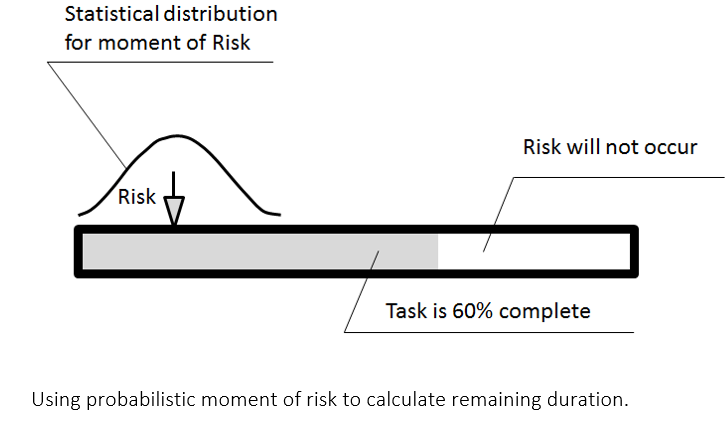During a project, we can recalculate the probability of occurrence and moment of the events using actual performance data. The analysis can be repeated to generate a new project schedule with updated costs and/or durations. But what should be done in cases where an activity is only partially complete, and it has risk events assigned to it? If the event has already occurred, will it occur again? Or vice versa, if nothing has occurred yet, is there still a chance that it could occur?
There are three distinct approaches to this problem:
1. Probabilities of a random event in partially completed activities stay the same regardless of the outcome of previous events. This is mostly related to external events, which cannot be affected by project stakeholders. An example might be that a “bad weather” event during a course of one-year construction project can occur 10 times. As it turns out, half a year after construction began, bad weather has occurred 8 times. Some may hope that because the risk has already occurred more than expected, they can now look forward to relatively benign weather. They would be incorrect. Regardless of the experience of the previous 6 months, in the remaining half year the event could still occur 5 times. This approach is related to psychological effect called “gambler’s fallacy” or belief that a successful outcome is due after a run of bad luck.
2. The probability of events in a partially completed activity depend on the moment of the event. If the moment of risk is earlier than the moment when actual measurement is performed, this event can no longer affect the activity. For example, the activity “software user interface development” takes 10 days. The event “change of requirements” can occur any time during the activity and can cause a delay (a uniform distribution for the moment of the event). Now if 60% of work is completed within 6 days and the probabilistic moment of the event happens to land in between the start of the activity and 6 days, the “moment” in which this risk could occur has passed and it cannot cause any delay. In this case, the probability that the event will occur will be reduced and eventually become zero, when the activity approaches completion.
3. Managers define how the probabilities of events can change during any stage of an activity. For example, the event “change of requirements” occurs, but it could happen again depending on many factors, such as how well the requirements are defined and interpreted and the business situation. To use this approach, excited state activities should be explicitly subscribed to or not subscribed to certain events. For example, a new excited state after the event “change of requirements” may not be subscribed to this event again, and as a result, this event will not affect the activity a second time.


